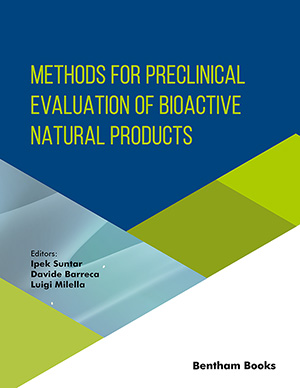Abstract
Background: Neurodegenerative disorders belong to different classes of progressive/ chronic conditions that affect the peripheral/central nervous system. It has been shown through studies that athletes who play sports involving repeated head trauma and sub-concussive impacts are more likely to experience neurological impairments and neurodegenerative disorders in the long run
Aims: The aim of the current narrative review article is to provide a summary of various nutraceuticals that offer promise in the prevention or management of sports-related injuries, especially concussions and mild traumatic brain injuries.
Methods: This article reviews the various potential nutraceutical agents and their possible mechanisms in providing a beneficial effect in the injury recovery process. A thorough survey of the literature was carried out in the relevant databases to identify studies published in recent years. In the present article, we have also highlighted the major neurological disorders along with the associated nutraceutical(s) therapy in the management of disorders.
Results: The exact pathological mechanism behind neurodegenerative conditions is complex as well as idiopathic. However, mitochondrial dysfunction, oxidative stress as well as intracellular calcium overload are some common reasons responsible for the progression of these neurodegenerative disorders. Owing to the multifaceted effects of nutraceuticals (complementary medicine), these supplements have gained importance as neuroprotective. These diet-based approaches inhibit different pathways in a physiological manner without eliciting adverse effects. Food habits and lifestyle of an individual also affect neurodegeneration.
Conclusion: Studies have shown nutraceuticals (such as resveratrol, omega-3-fatty acids) to be efficacious in terms of their neuroprotection against several neurodegenerative disorders and to be used as supplements in the management of traumatic brain injuries. Protection prior to injuries is needed since concussions or sub-concussive impacts may trigger several pathophysiological responses or cascades that can lead to long-term complications associated with CNS. Thus, the use of nutraceuticals as prophylactic treatment for neurological interventions has been proposed.
Keywords: Neurodegeneration, calcium, oxidative stress, mild traumatic brain injury, nutraceuticals
[http://dx.doi.org/10.3390/antiox9030260] [PMID: 32235799]
[http://dx.doi.org/10.1080/07315724.2019.1683379] [PMID: 31829802]
[http://dx.doi.org/10.1016/j.jtcme.2020.03.008] [PMID: 32953558]
[http://dx.doi.org/10.2174/1381612825666190717110932] [PMID: 31333112]
[http://dx.doi.org/10.1021/acs.jafc.8b06146] [PMID: 30653316]
[http://dx.doi.org/10.2174/1570159X14666160104142223] [PMID: 26725888]
[http://dx.doi.org/10.1155/2019/4179676] [PMID: 31467632]
[http://dx.doi.org/10.1016/j.cvsm.2017.12.012] [PMID: 29429599]
[http://dx.doi.org/10.3389/fphys.2018.00477] [PMID: 29867535]
[http://dx.doi.org/10.1080/1028415X.2019.1625222] [PMID: 31397223]
[http://dx.doi.org/10.1542/peds.2010-2005] [PMID: 20805152]
[http://dx.doi.org/10.1371/journal.pone.0094734] [PMID: 24740265]
[PMID: 28446457]
[http://dx.doi.org/10.1139/apnm-2016-0406] [PMID: 28079396]
[http://dx.doi.org/10.1016/S1474-4422(17)30371-X] [PMID: 29122524]
[http://dx.doi.org/10.1016/B978-0-12-802973-2.00012-4]
[http://dx.doi.org/10.3389/fneur.2018.00640] [PMID: 30131759]
[http://dx.doi.org/10.1016/j.neulet.2019.134347] [PMID: 31229625]
[http://dx.doi.org/10.1080/02699052.2019.1565896] [PMID: 30694081]
[http://dx.doi.org/10.1111/jcmm.12998] [PMID: 27696676]
[http://dx.doi.org/10.1089/brain.2014.0279] [PMID: 25242171]
[http://dx.doi.org/10.1177/1759091418781921] [PMID: 29932344]
[http://dx.doi.org/10.1007/s11682-011-9145-0] [PMID: 22434552]
[http://dx.doi.org/10.1007/s11682-012-9164-5] [PMID: 22552850]
[http://dx.doi.org/10.1007/s11682-012-9159-2] [PMID: 22477019]
[http://dx.doi.org/10.1089/ther.2010.0011] [PMID: 23336085]
[http://dx.doi.org/10.1089/neu.2010.1707] [PMID: 21190396]
[http://dx.doi.org/10.1016/j.tcb.2011.06.004] [PMID: 21763137]
[http://dx.doi.org/10.1016/j.neuroimage.2010.11.022] [PMID: 21073961]
[http://dx.doi.org/10.1038/nrneurol.2013.29] [PMID: 23458973]
[http://dx.doi.org/10.1093/brain/awq347] [PMID: 21193486]
[http://dx.doi.org/10.1007/s40279-017-0847-3] [PMID: 29368186]
[http://dx.doi.org/10.1055/s-0032-1306381]
[http://dx.doi.org/10.1016/j.bbamem.2012.01.024] [PMID: 22326946]
[http://dx.doi.org/10.1016/j.bbamem.2011.12.030] [PMID: 22245380]
[http://dx.doi.org/10.1038/nature11314] [PMID: 22801498]
[http://dx.doi.org/10.1089/neu.2009.1112] [PMID: 19852581]
[http://dx.doi.org/10.1523/JNEUROSCI.3955-08.2009] [PMID: 19369548]
[http://dx.doi.org/10.1007/s12035-014-9021-1] [PMID: 25432891]
[http://dx.doi.org/10.1016/j.neuroscience.2015.04.021] [PMID: 25892702]
[http://dx.doi.org/10.1016/j.phymed.2014.12.006] [PMID: 25765832]
[http://dx.doi.org/10.1007/s12035-015-9179-1] [PMID: 25952542]
[http://dx.doi.org/10.1371/journal.pone.0120964] [PMID: 25807081]
[http://dx.doi.org/10.1002/glia.22350] [PMID: 22674585]
[http://dx.doi.org/10.1126/scitranslmed.3006767] [PMID: 24107777]
[http://dx.doi.org/10.1186/0717-6287-47-74] [PMID: 25723052]
[http://dx.doi.org/10.1186/s12883-014-0212-1] [PMID: 25403709]
[http://dx.doi.org/10.1007/s40263-014-0148-4] [PMID: 24557746]
[http://dx.doi.org/10.2174/1570163815666180219115453] [PMID: 29468975]
[http://dx.doi.org/10.1016/j.jff.2019.04.039]
[http://dx.doi.org/10.1039/C9FO00293F] [PMID: 31041963]
[http://dx.doi.org/10.3390/nu11081881] [PMID: 31412596]
[http://dx.doi.org/10.3390/ijms20133274] [PMID: 31277285]
[http://dx.doi.org/10.1016/j.nbd.2019.02.015] [PMID: 30951849]
[http://dx.doi.org/10.2174/1871530319666181129103056] [PMID: 30488803]
[http://dx.doi.org/10.1155/2018/8152373] [PMID: 30510627]
[http://dx.doi.org/10.1016/j.neuroscience.2009.04.042] [PMID: 19393301]
[http://dx.doi.org/10.1111/j.1742-4658.2010.07754.x] [PMID: 20659161]
[http://dx.doi.org/10.1016/j.pbb.2013.07.019] [PMID: 23932920]
[http://dx.doi.org/10.1016/S0024-3205(01)01268-1] [PMID: 11665842]
[http://dx.doi.org/10.1159/000354516] [PMID: 24335167]
[http://dx.doi.org/10.1007/s11064-017-2421-7] [PMID: 29090409]
[http://dx.doi.org/10.1016/j.neuint.2017.05.013] [PMID: 28532681]
[http://dx.doi.org/10.1093/nutrit/nuy010] [PMID: 29596658]
[http://dx.doi.org/10.1007/s00394-017-1462-7] [PMID: 28523372]
[http://dx.doi.org/10.3390/ijms20174256] [PMID: 31480294]
[http://dx.doi.org/10.1016/j.neubiorev.2014.11.008] [PMID: 25446949]
[http://dx.doi.org/10.3390/ijms15010895] [PMID: 24413756]
[http://dx.doi.org/10.1002/9781119155195.ch28]
[http://dx.doi.org/10.37358/RC.19.9.7497]
[http://dx.doi.org/10.2147/NDT.S157475] [PMID: 29559781]
[http://dx.doi.org/10.1097/HRP.0000000000000101] [PMID: 26954600]
[http://dx.doi.org/10.1093/ijnp/pyw018] [PMID: 26902950]
[http://dx.doi.org/10.4088/JCP.15m10278] [PMID: 27135986]
[http://dx.doi.org/10.1016/j.outlook.2017.06.012] [PMID: 28755974]
[http://dx.doi.org/10.1155/2018/4147320]
[http://dx.doi.org/10.1212/WNL.0000000000004608] [PMID: 28978654]
[http://dx.doi.org/10.1093/jnen/61.3.245] [PMID: 11895039]
[http://dx.doi.org/10.1016/j.tcb.2015.12.007] [PMID: 26827090]
[http://dx.doi.org/10.1002/jnr.24210] [PMID: 29380912]
[http://dx.doi.org/10.31925/farmacia.2019.3.15]
[http://dx.doi.org/10.3109/00207451003695690] [PMID: 20374079]
[http://dx.doi.org/10.1155/2012/192464] [PMID: 22187555]
[http://dx.doi.org/10.2174/1381612822666151112145730] [PMID: 26561075]
[http://dx.doi.org/10.1016/j.neuint.2015.06.011] [PMID: 26122973]
[http://dx.doi.org/10.1177/2192568218813916] [PMID: 30775214]
[http://dx.doi.org/10.1016/j.wneu.2018.03.198] [PMID: 29626691]
[http://dx.doi.org/10.1097/TA.0b013e31827e1f51] [PMID: 23354240]
[http://dx.doi.org/10.1038/cddis.2014.123] [PMID: 24675465]
[http://dx.doi.org/10.1080/14660820050515061] [PMID: 11465017]
[http://dx.doi.org/10.1113/jphysiol.2002.035832] [PMID: 12692175]
[http://dx.doi.org/10.17305/bjbms.2014.2262] [PMID: 24856375]
[http://dx.doi.org/10.1007/s40279-014-0151-4] [PMID: 24791917]
[http://dx.doi.org/10.23736/S0022-4707.16.06286-1] [PMID: 27045740]
[http://dx.doi.org/10.1007/s11739-017-1653-5] [PMID: 28361355]
[PMID: 25812706]
[http://dx.doi.org/10.33549/physiolres.931884] [PMID: 20533869]
[http://dx.doi.org/10.1080/01616412.2016.1251711] [PMID: 27809706]
[http://dx.doi.org/10.1016/j.atherosclerosis.2014.08.041] [PMID: 25238217]
[http://dx.doi.org/10.1186/1750-1326-6-51] [PMID: 21771318]
[http://dx.doi.org/10.4061/2011/164608]
[http://dx.doi.org/10.1519/JSC.0000000000001397] [PMID: 26950346]
[http://dx.doi.org/10.1017/S0007114514000087] [PMID: 24621991]
[http://dx.doi.org/10.3390/nu6126060] [PMID: 25533013]
[http://dx.doi.org/10.7205/MILMED-D-13-00315] [PMID: 24594466]
[http://dx.doi.org/10.1007/s00702-014-1304-1] [PMID: 25239189]
[http://dx.doi.org/10.1101/cshperspect.a023705] [PMID: 27940516]
[http://dx.doi.org/10.1093/brain/aws307] [PMID: 23208308]
[http://dx.doi.org/10.1212/01.wnl.0000438229.56094.54] [PMID: 24371306]
[http://dx.doi.org/10.1136/oemed-2013-101444] [PMID: 24142978]
[http://dx.doi.org/10.1136/bjsports-2013-092758] [PMID: 24026299]
[http://dx.doi.org/10.1371/journal.pone.0065465] [PMID: 23724144]
[http://dx.doi.org/10.1001/jama.2016.0287] [PMID: 26903338]
[http://dx.doi.org/10.1111/cns.12204] [PMID: 24428861]
[http://dx.doi.org/10.3389/fnagi.2014.00036] [PMID: 24639650]
[http://dx.doi.org/10.3390/molecules15031168] [PMID: 20335972]
[http://dx.doi.org/10.1159/000342208] [PMID: 22947921]
[http://dx.doi.org/10.2174/156720511796391908] [PMID: 21605052]
[PMID: 14590204]
[http://dx.doi.org/10.1016/j.brainres.2012.11.019] [PMID: 23178511]
[http://dx.doi.org/10.1089/rej.2009.0908] [PMID: 20230279]
[http://dx.doi.org/10.1016/j.bbi.2004.01.004] [PMID: 15265532]
[http://dx.doi.org/10.1186/s12970-017-0173-z] [PMID: 28615996]
[http://dx.doi.org/10.1023/A:1022413202549] [PMID: 12701814]
[http://dx.doi.org/10.1016/j.jns.2012.05.030] [PMID: 22669122]
[http://dx.doi.org/10.1016/j.bbadis.2009.10.007] [PMID: 19853657]
[http://dx.doi.org/10.3233/JAD-131001] [PMID: 24122005]
[http://dx.doi.org/10.1080/1028415X.2017.1360558] [PMID: 28784051]
[http://dx.doi.org/10.1055/s-0030-1250043] [PMID: 20560112]
[http://dx.doi.org/10.1016/j.fct.2013.06.019] [PMID: 23793040]
[http://dx.doi.org/10.1007/s00394-014-0745-5] [PMID: 25074825]
[http://dx.doi.org/10.1016/j.expneurol.2012.08.023] [PMID: 22947198]
[http://dx.doi.org/10.18054/pb.v119i3.5434]
[http://dx.doi.org/10.3390/ijms19113299]
[http://dx.doi.org/10.1016/j.matpr.2017.10.023]
[http://dx.doi.org/10.1016/j.nbd.2010.11.017] [PMID: 21145397]

































